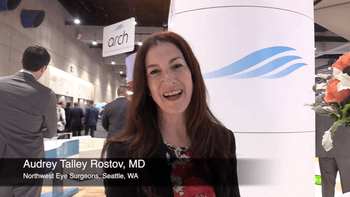
Audrey Talley Rostov, MD, discusses corneal cross-linking (CXL) complications, and when to consider CXL treatment

Audrey Talley Rostov, MD, discusses corneal cross-linking (CXL) complications, and when to consider CXL treatment

Retina specialist Ron M. Kurtz, MD, details the way collaborative innovation can improve the lives of ophthalmic surgeons, and their patients.

Patients prefer the convenience of using a compounded triple combination drop over a standard medication plan.
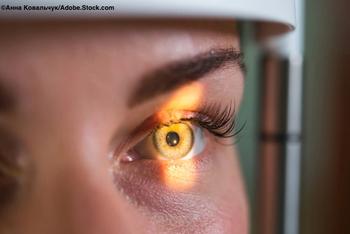
Procedure may be a promising option for presbyopia correction in emmetropic patients, according to results of clinical trial presented by Aylin Kiliç, MD, at ASCRS 2019.
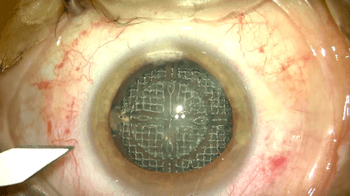
A technique to assure complete separation of the cap and prevent a radial tear has been perfected by Steve Arshinoff, MD.

Sara Anastas, MD, discusses criteria for surgical intervention methods with either corneal crosslinking (CXL) or penetrating keratoplasty in pediatric patients.

Providing findings from a retrospective study, Li Lim, MD, noted that eyes with high myopia benefit from CXL add-on to LASIK, resulting in safety, efficacy, and predictability with refractive outcomes that are more stable than those achieved with LASIK alone.

The registry provides real-world evidence of safety, and durable efficacy of a glaucoma surgery device.

Stephen C. Pflugfelder, MD, honored as the recipient of the Binkhorst Lecture and medal at ASCRS 2019, lectured on the quest for tear stability in dry eye patients.
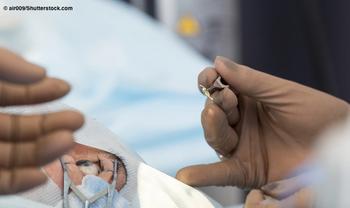
New technology offers surgeons the unfolding efficiency of an enhanced material along with the rotational stability that characterizes the current toric platform.

Corneal surgery for Fuchs’ rejuvenates the endothelium rather than replacing it, and DSO is joining the lineup as a new treatment option.

During Refractive Day at ASCRS 2019, Julie Schallhorn, MD, MS, shed some new light on the topic by challenging conventional wisdom about dry eye and LASIK.
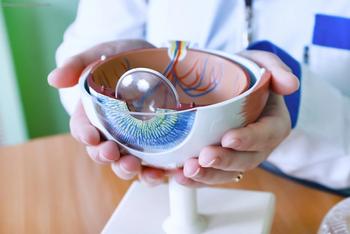
A carefully packed surgical toolkit can optimize cataract surgery outcomes.

The 2019 annual meetings of the American Society of Cataract and Refractive Surgery and the American Society of Ophthalmic Administrators will be held May 3 to 7 in San Diego.

With ability to provide LASIK-like outcomes, the light-adjustable lens creates a new opportunity for cataract surgeons to grow the premium channel, says Fritz H. Hengerer, MD, PhD.

Favorable outcomes have been achieved after the first clinical use of IOL technology that is designed to maintain an open capsule long-term after cataract surgery and enable refractive fine-tuning postoperatively.

"Techniques and technologies evolve in parallel, and the motivation should always be to improve lives," said Steve Charles, MD, founder, Charles Retina Institute, Germantown, TN.

A modified correcting applanation tonometry surface (CATS) prism reduces measurement errors due to corneal biomechanical parameters and improves the accuracy of IOP measurements compared with a standard Goldmann applanation tonometer (GAT) prism.

An investigational laser was singled out by Richard Packard, MD, is a session to highlight "exciting new devices" to help surgeons. The technology provides a fast, simple, and elegant technique for precise capsulotomy, he noted.
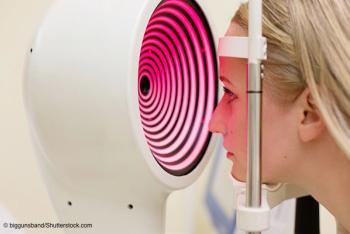
In eyes with keratoconus undergoing CXL, topography-guided photorefractive keratectomy (TG-PRK) provides superior refractive and functional outcomes compared with transepithelial phototherapeutic keratectomy (TE-PTK). Yet, there remains a role for PTK, said Simon P. Holland, MD.
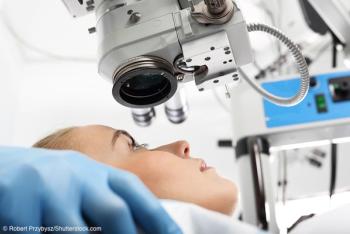
Ophthalmologists know from large studies that the major driving factor for patient satisfaction is having a good postoperative refractive outcome. "That is especially so for patients receiving multifocal IOLs, toric lenses, or having clear lens exchange," said Oliver Findl, MD, MBA.

Instead of thinking about getting patients to see 20/20 uncorrected vision and out of the inconvenience of glasses or contact lenses, perhaps in the future we will be talking about getting them all to see 20/10 uncorrected and better than they could before with correction, said Daniel S. Durrie, MD. .

Injecting air into the lumen of the graft is an effective and efficient technique for dealing with the dreaded "taquito" graft configuration when performing Descemet's membrane endothelial keratoplasty (DMEK), said Neda Shamie, MD.

Delivering the Steinert Lecture during the ASCRS Refractive Day, Richard L. Lindstrom, MD, provided his thoughts on the current and forthcoming state of laser refractive surgery.

Results of the EAGLE study support clear-lens extraction as initial intervention for eyes with primary angle-closure glaucoma (PACG) or primary-angle closure (PAC) and high IOP, said David S. Friedman, MD, PhD, at the 2018 ASCRS Glaucoma Day.